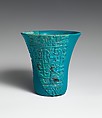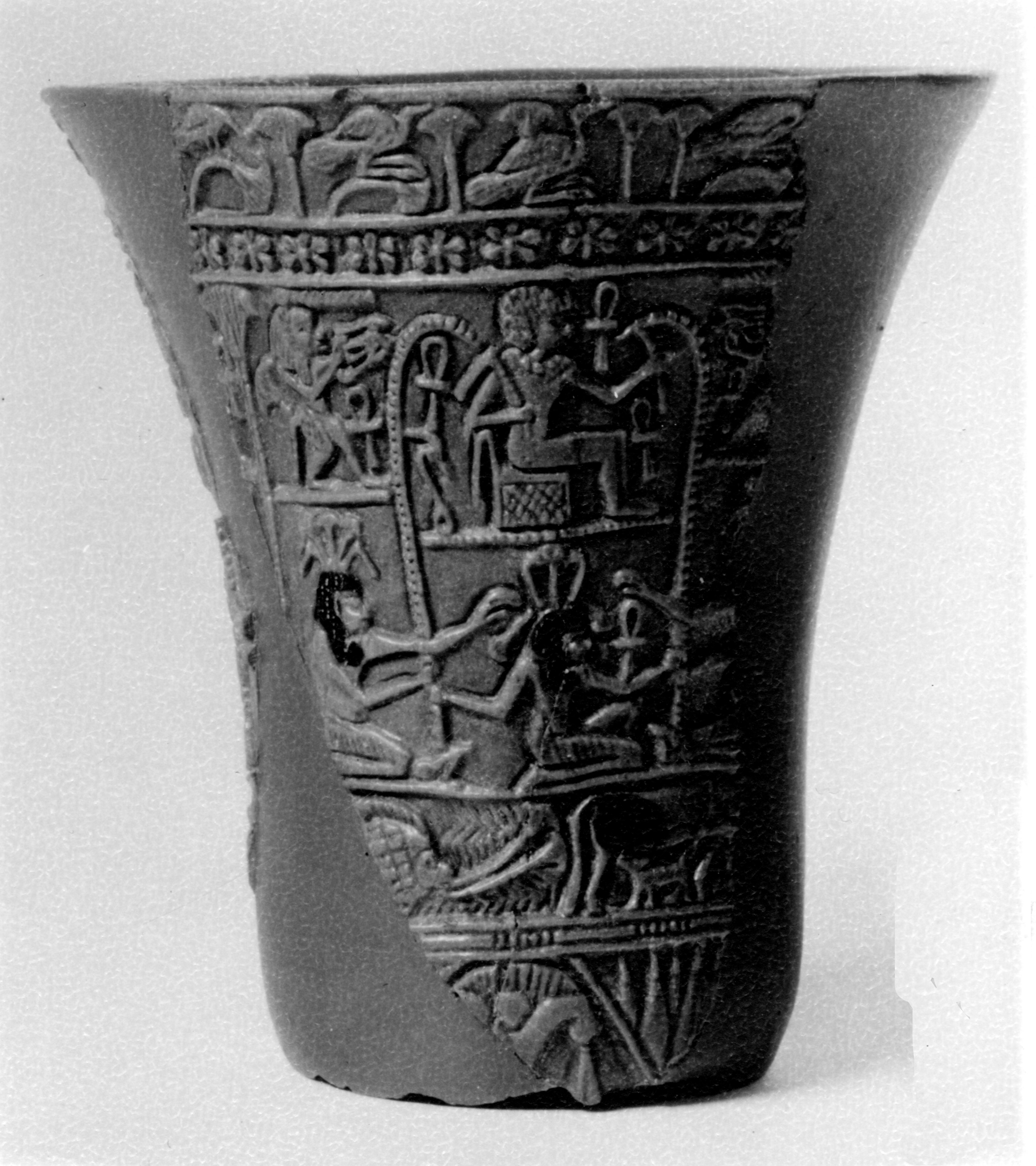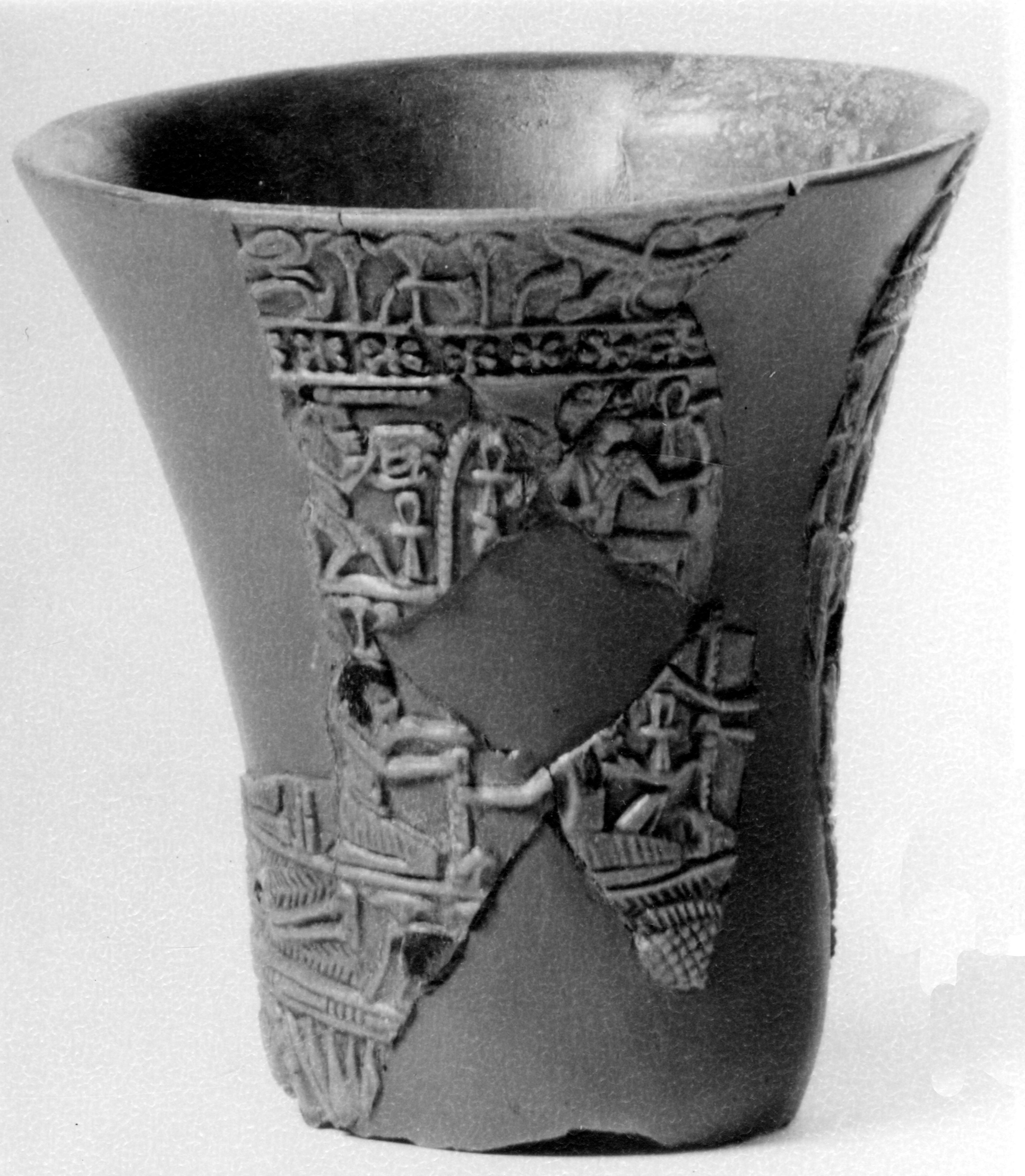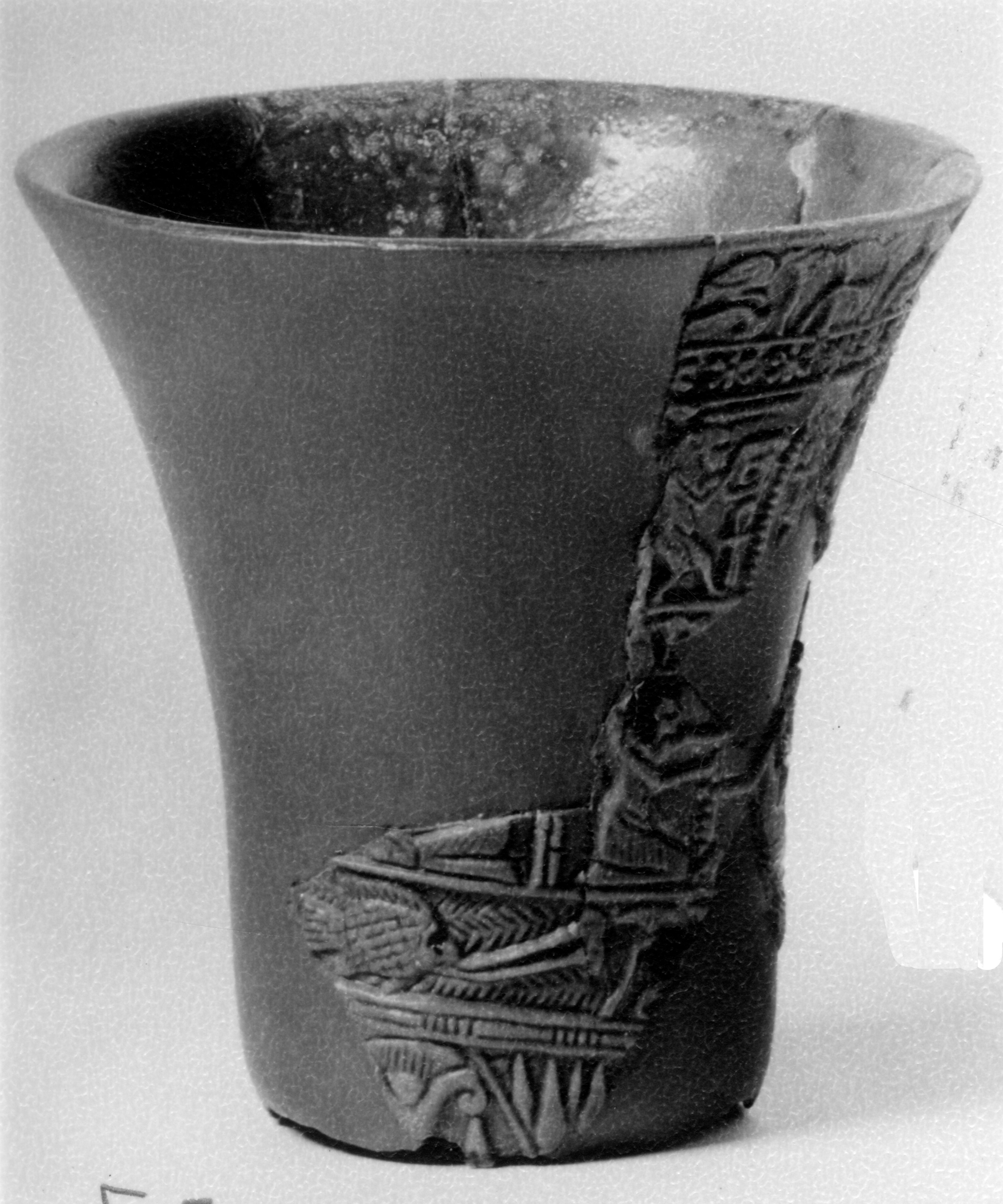Reconstructed lotiform chalice
Third Intermediate Period or later
Made of faience glazed a rich turquoise, this goblet takes the shape of the fragrant blue lotus. Reconstructed from eight fragments, it would originally have stood on a slender column imitating the flower's stalk. (For a complete example, see 13.182.53.) This type of chalice, which is seen first in the New Kingdom, appears to have been used primarily as a cult vessel.
Both the shape and the imagery of this chalice are closely linked with the themes of creation and rejuvenation. As the lotus blossom closes at night and opens at dawn to greet the rising sun, it became associated with the daily cycle of death and rebirth. The relief decoration is set in the marshes where the lotus bloomed, echoing the watery landscape of creation. The principal scene, repeated three times around the cup's circumference, shows a youthful king in the blue crown and festal collar seated on a throne, evoking myths of the king reborn as a child of the sun god. Below, the Nile god, Hapy, presents the king with palm ribs with "ankh" signs and "was" scepters, symbolizing many years of life and power; to either side are figures of Bes, a household deity, who offers "ankh" signs and "wedjat" eyes (emblems of healing and rejuvenation). A frieze of ducks in a papyrus marsh and a band of rosettes adorn the rim. Below are alternating images of tilapia fish and a cow suckling her calf, both potent icons of rebirth.
Due to rights restrictions, this image cannot be enlarged, viewed at full screen, or downloaded.
This artwork is meant to be viewed from right to left. Scroll left to view more.






